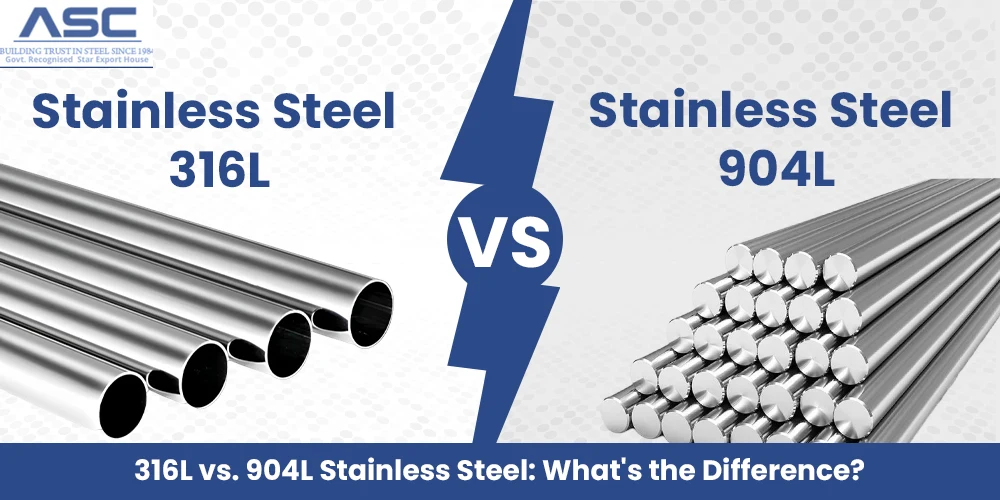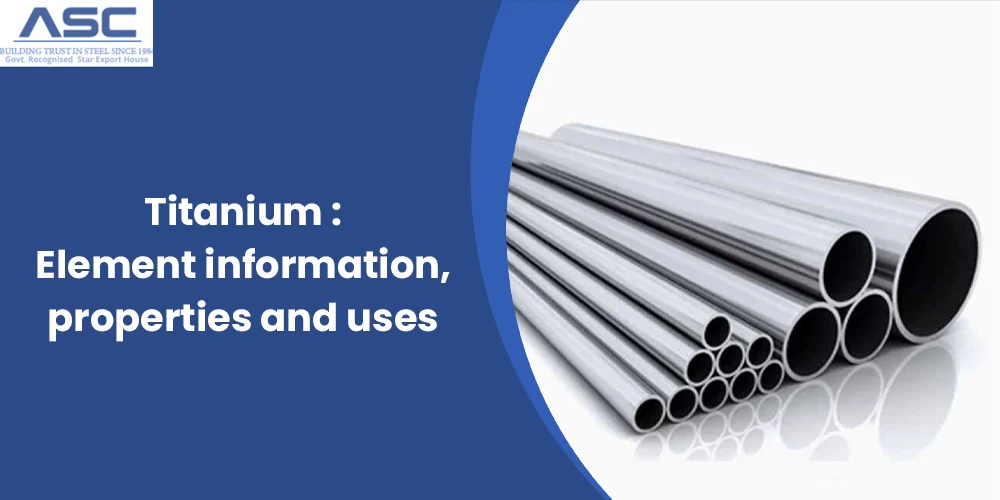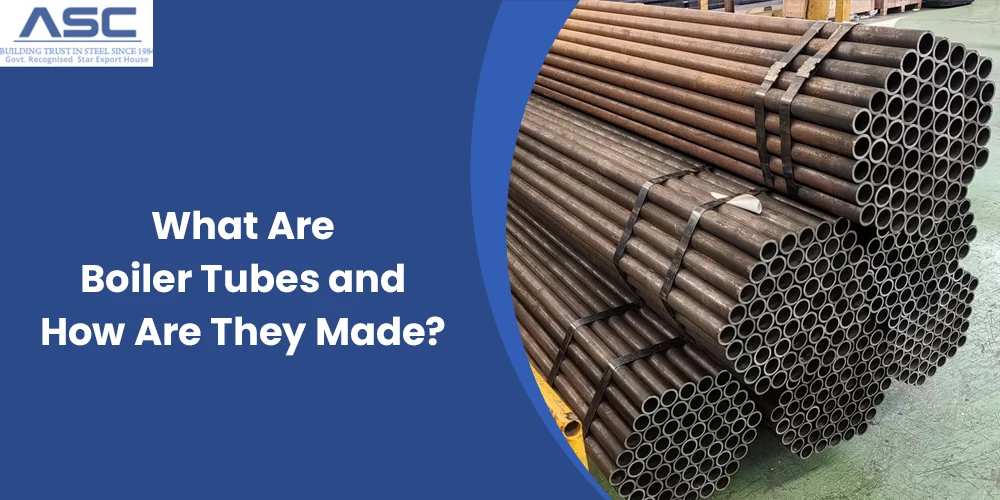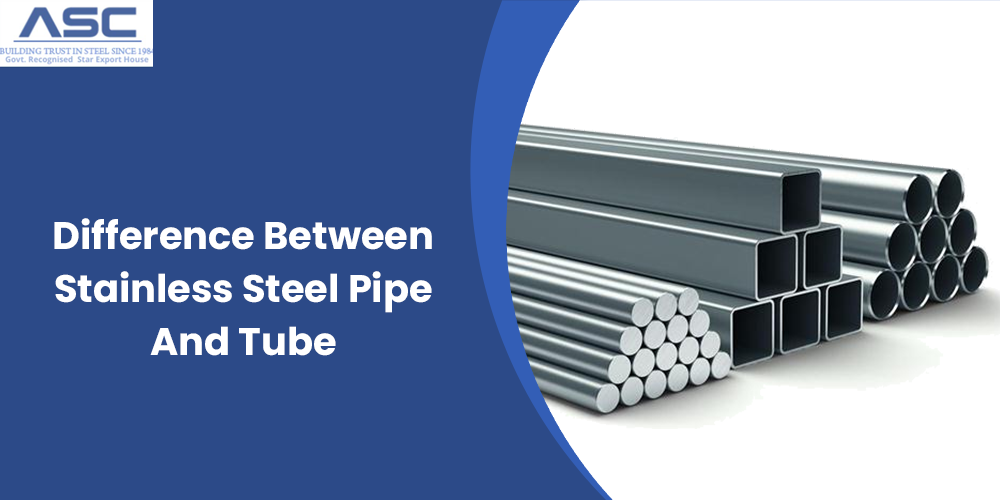316L vs. 904L Stainless Steel: What's the Difference?
by AMC
Posted on January 29, 2025 at 05:01 PM

When it comes to choosing the right stainless steel for specific applications, 316L stainless steel and 904L stainless steel (also known as SS 904L) are two of the most commonly compared materials. Both of these austenitic stainless steel alloys are known for their corrosion resistance, strength, and durability, but they differ significantly in terms of chemical composition, performance, and ideal use cases. In this article, we will explore the differences between SS 316 and 316L, along with the key distinctions between 316L stainless steel and 904L steel.
What is 316L Stainless Steel?
316L stainless steel is an austenitic stainless steel alloy that is highly regarded for its excellent corrosion resistance and weldability. The "L" in 316L stands for "low carbon," which helps in reducing intergranular corrosion when welded. Its main components include iron, chromium, nickel, and molybdenum, providing a balance of strength, formability, and corrosion resistance.
Key Properties of 316L Stainless Steel:
- Corrosion Resistance: 316L stainless steel is highly resistant to chlorides and corrosive substances, making it ideal for applications in marine environments, chemical processing, and medical devices.
- Strength: It offers good tensile strength, making it suitable for applications requiring structural integrity.
- Malleability: This alloy is highly malleable, allowing for various shapes and forms to be manufactured easily.
- Cost-Effective: Compared to other high-performance alloys, 316L offers a solid balance between performance and cost.
Common Uses of 316L Stainless Steel:
- Marine Equipment: Commonly used in shipbuilding and offshore drilling platforms due to its resistance to seawater.
- Medical Devices: Used for surgical instruments, implants, and prosthetics due to its biocompatibility.
- Food Processing: Used in food-grade equipment because of its resistance to high temperatures and cleaning chemicals.
What is 904L Stainless Steel?
904L stainless steel (or SS 904L) is a high-alloy austenitic stainless steel known for its superior corrosion resistance, particularly in highly corrosive environments. The primary components of 904L steel are iron, nickel, chromium, molybdenum, and a small amount of copper, which enhance its resistance to chemicals like sulfuric acid, chlorides, and phosphoric acid.
Key Properties of 904L Stainless Steel:
- Corrosion Resistance: 904L stainless steel offers superior corrosion resistance compared to 316L, especially in acidic environments. It excels in handling exposure to sulfuric acid, phosphoric acid, and chlorides.
- Strength and Durability: It is stronger and more durable than 316L, making it suitable for more extreme conditions.
- High-Temperature Resistance: It can withstand high temperatures and is highly resistant to oxidation compared to 316L.
- Formability:SS 904L is highly formable and weldable, allowing it to be shaped into complex forms.
Common Uses of 904L Stainless Steel:
- Chemical Processing: Used in chemical reactors, tanks, and pipelines exposed to aggressive chemicals.
- Pharmaceutical Manufacturing: Ideal for use in equipment in contact with highly corrosive substances in the pharmaceutical industry.
- Oil and Gas Industry: Employed in offshore rigs and petrochemical plants that deal with extreme environmental conditions.
316L vs. 904L: Key Differences
While both 316L stainless steel and 904L stainless steel are austenitic alloys, they differ significantly in their chemical composition and performance. Below is a comparison of the 904L chemical composition versus 316L and how each impacts the overall performance of the alloys.
- Chemical Composition
- 316L Stainless Steel: Composed primarily of iron, chromium (16–18%), nickel (10–14%), and molybdenum (2–3%). The low carbon content in 316L helps improve its resistance to intergranular corrosion after welding.
- 904L Stainless Steel: Contains higher amounts of nickel (23–28%) and molybdenum (4–5%) compared to 316L. It also includes copper (1–2%) and iron (balance), which help enhance its resistance to harsh chemicals and corrosion in extremely aggressive environments.
- Corrosion Resistance
- 316L Stainless Steel: While 316L stainless steel is highly resistant to chlorides and seawater, it may not perform as well as 904L in extremely corrosive environments such as those involving sulfuric acid or phosphoric acid.
- 904L Stainless Steel: 904L steel provides superior corrosion resistance compared to 316L, particularly in aggressive chemical environments. This makes SS 904L the preferred choice for applications involving highly corrosive materials like sulfuric acid.
- Strength and Durability
- 316L Stainless Steel: 316L stainless steel is strong and durable but is generally not as robust in extreme conditions as 904L steel.
- 904L Stainless Steel: With its high nickel and molybdenum content, 904L steel is more durable and resistant to wear and tear, especially in aggressive or high-temperature environments.
- Cost
- 316L Stainless Steel: 316L stainless steel is more cost-effective compared to 904L, making it a more budget-friendly option for many applications. This is due to the relatively lower content of nickel and molybdenum.
- 904L Stainless Steel: 904L is more expensive than 316L due to its higher content of nickel, molybdenum, and copper. However, its superior corrosion resistance in extreme conditions justifies the added cost in certain industries.
- Applications
- 316L Stainless Steel: Ideal for use in applications such as marine environments, food processing, medical equipment, and general-purpose chemical processing where the conditions are moderately harsh.
- 904L Stainless Steel: Best suited for industries where extreme corrosive environments are common, such as chemical processing, pharmaceutical manufacturing, oil and gas, and offshore drilling operations.
The Difference Between SS 316 and 316L
A common question that arises in discussions about 316L stainless steel is the difference between SS 316 and 316L. The main difference is that 316L contains a lower carbon content compared to SS 316. This reduction in carbon helps improve its weldability and corrosion resistance when exposed to heat during the welding process. 316L is especially beneficial for industries where welding is required and intergranular corrosion needs to be minimized.
Which Stainless Steel Should You Choose?
Choosing between 316L stainless steel and 904L steel depends on your application and the conditions the material will be exposed to:
- If you need a material that offers a solid balance of corrosion resistance, strength, and cost, 316L stainless steel is the more practical choice. It's highly suitable for marine applications, medical devices, food processing, and general chemical handling.
- If your application involves highly corrosive substances, high temperatures, or extreme conditions such as those found in the chemical processing, pharmaceutical, or oil and gas industries, 904L stainless steel would be the better option due to its superior corrosion resistance and durability.
Conclusion
In conclusion, while both 316L stainless steeland 904L stainless steel are excellent materials for corrosion-resistant applications, they differ in terms of chemical composition, corrosion resistance, strength, and cost. 316L is a more cost-effective choice for less aggressive environments, while 904L steelis ideal for harsh chemical environments and industries that demand superior performance.
At Amardeep Steel Centre, we offer both 316L stainless steel and 904L stainless steel products. If you're unsure which material is best suited for your project, our team of experts is here to assist you in making the right choice. Feel free to contact us today for more information!

Titanium - Element Information, Properties, and Uses
Titanium, symbolized as Ti on the periodic table, is a metal that has captivated scientists and industries alike due to its remarkable properties.

